Why is it raining goals at the 2014 World Cup?
The 2014 World Cup is seeing an astonishing goal rate. Before the Belgium-Algeria match, there were an average of 3.14 goals scored per game. Not since the 1958 World Cup in Sweden have there been so many goals. Why?
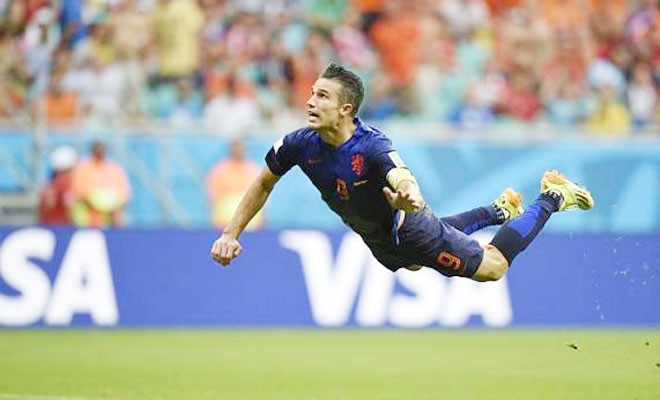 |
1. Many experienced teams participate in the tournament
According to statistics from the 1974 World Cup, teams with no experience in the World Cup scored significantly fewer goals than teams with experience in the World Cup. Specifically:
+ Never participated in the World Cup: Scored 0.87 goals/match.
+ World Cup experience: 1.78.
It is also statistically proven that matches involving teams participating in the World Cup for the first time have fewer goals than other matches. Specifically: + There are teams participating in the World Cup for the first time: 1974 was 2.37 goals/match; 1990 was 2.21 goals/match. + Other matches: 1974 was 2.6 goals/match; 1990 was 2.59 goals/match. |
The reason may be that teams participating in the World Cup for the first time often enter the game with a cautious mentality. They find it difficult to score goals against their opponents. But they also want to limit the number of goals conceded. Therefore, it is easy to point out that the reason why the 2014 World Cup has many goals is because there are few newcomers. Only 1 team is participating in the World Cup for the first time, Bosnia. That means, like in 2010, only Slovakia is participating in the World Cup for the first time.
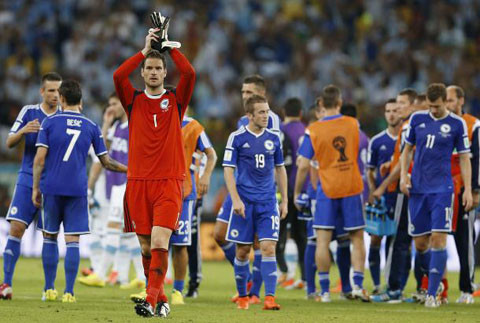 |
| Only Bosnia is a newcomer at the 2014 World Cup. |
But the difference was that Algeria was returning to the World Cup after 24 years; New Zealand and Honduras were returning to the World Cup for the first time in 28 years. North Korea were returning to the World Cup for the first time in 44 years. They were almost like rookies.
This year, every team has been to two World Cups in the last 16 years. Every team, except Bosnia, has players with World Cup experience.
2. Higher quality of players. Greater influence of talents
22/23 teams at the top of the FIFA rankings participated in the 2014 World Cup. A few exceptions were absent. For example, Ukraine ranked 16th. In South Africa, 3 teams with high rankings on the FIFA rankings were absent: Croatia, Russia and Egypt (10, 11, 12). The average ranking of the teams at the 2014 World Cup was 4 places higher than at the 2010 World Cup. This means that the gap in skill level between teams has been reduced.
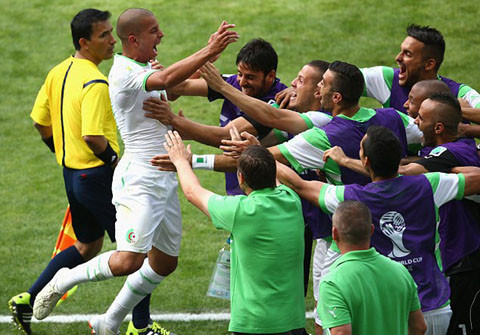 |
| Only Algeria played defensively after the first round of group stage matches. |
The best team in 2010 is not so good anymore in 2014. The top team in the FIFA rankings in 2010 was Brazil with 1611 points, the lowest team was North Korea with 285 points. The gap was 1326 points. Now, the highest team Spain has 1485 points, the lowest team Australia has 526 points. The gap is 959 points.
Why is this important? Imagine this: You are ranked 105th in the world and you are drawn into a group full of strong teams. What strategy do you use to deal with it? Defend yourself, of course.
3. Diverse tactics
In boxing, they say style creates combat. Football is a bit like that. At the 2010 World Cup, the dominant tactic was 4-2-3-1. Of course there are variations or teams that use different tactics. Like Mexico. Like Marcelo Bielsa's Chile. But they are very rare.
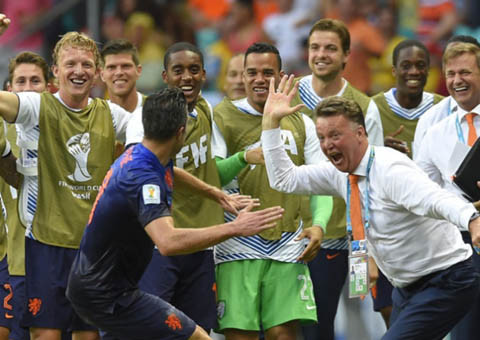 |
| The Netherlands played 3-4-3 against Spain. |
This year, the 4-2-3-1 may still dominate, but other styles are more prevalent. The USA used a diamond midfield. The Netherlands played 3-4-3 against Spain. Honduras played 4-4-2. Many smaller teams dared to use two strikers, such as Ecuador, Chile or Nigeria. When teams play more directly and move forward, goals are more likely.
According to Opta statistics on passes leading to goals: 2010: On average, teams made 2.91 passes to create 1 goal. 2014: On average it took just 2.63 passes to score a goal. |
This means teams will try to get the ball to their forwards as quickly as possible. It doesn’t mean they will play long balls (the proportion of long balls at this World Cup has decreased) but there will be more unpredictable passes. And teams will win the ball back in higher positions, making it easier to score.
Opta stats on crosses per game: 2010: 32.4 crosses/match. 2014: 27.3 crosses/match. Error rate: 2010: 31.3 fouls/match. 2014: 26 fouls/match. |
This means that teams rarely play the ball “roundabout” to the wings anymore, but play directly. And they do not have the mentality of “sawing and pulling” to win points, committing fouls to disrupt the opponent’s play. As a result, the matches are more interesting.
4. The golden age of attacking football. Defensive teams get worse.
First of all, it is necessary to review the number of goals in the top European national championships, according to the table below.
Tournament | 2006-10 | 2010-14 |
Premier League | 2.58 | 2.79 |
La Liga | 2.67 | 2.78 |
Bundesliga | 2.82 | 2.96 |
Serie A | 2.58 | 2.61 |
It is easy to see that the number of goals scored in the national championships has increased from 2010 to 2014. Why do we consider these tournaments? Because over 50% of the players who played in the World Cup played in these tournaments. They are the ones who created the goals. Changing the tournament cannot change the nature of the teams, which are all pillars playing in the 4 tournaments mentioned above.
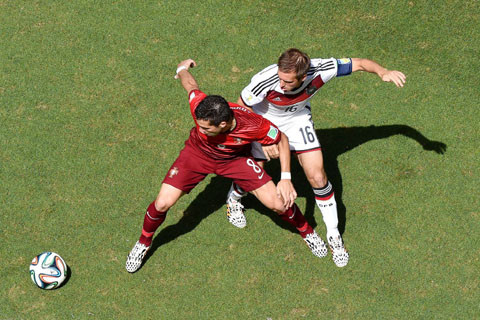 |
| Lahm (white shirt), a good defender playing midfielder. |
We are living in the era of Messi, Ronaldo, Suarez, Ibrahimovic, Cavani, Bale, Aguero, Robben, Ribery, Falcao, van Persie, Neymar, the best attacking stars. But we do not have the experienced defenders of the past. In the top 100 players in the world voted by 4-4-2 magazine, only 10 out of the top 30 players in the world are defenders. And the best of them, Philipp Lahm, plays as a midfielder for the German team.
The attacking tendencies of the teams are clearly shown in the number of shots per game. The 2010 World Cup had 22.4 shots per game. The 2014 World Cup had 24.4 shots per game. The percentage of goals scored inside the box decreased from 81.4% in the 2010 World Cup to 18.6% in the 2014 World Cup. Meanwhile, the percentage of goals scored by headers increased from 17.2% to 22.7%. Crossing less, playing on the wing less, but scoring more goals by headers. It is clear that the defenders are getting worse.
5. In warm weather, many goals were scored.
South Africa is cold. This World Cup has been quite warm. Even hot in some places. The conditions have had a huge impact on the way teams approach games and their tactics. “It definitely has an impact,” said Australia coach Ange Postecoglou. “It contributes to the openness of the tournament, because the games are being played in warmer conditions.”
 |
| The World Cup took place in hot and humid weather. |
Recently, some scientists studying football have shown that as the weather moves from fall to winter, passing accuracy drops. Not by much, to be sure, but it is sustained and repeated. From 2007 to 2011, passing accuracy dropped by 8% between September and January.
Another statistic: Brian Burke, a researcher, found that teams performed worse when playing indoors than when playing outdoors. He also found that passing accuracy decreased in cold weather, but players tended to hold the ball longer than usual. Does this trend extend to soccer?
Just know that if you play in the heat, players run less, pass more, press less, and stalemates don't last long. That's the necessary condition for open football.
According to Thethaovanhoa.vn






